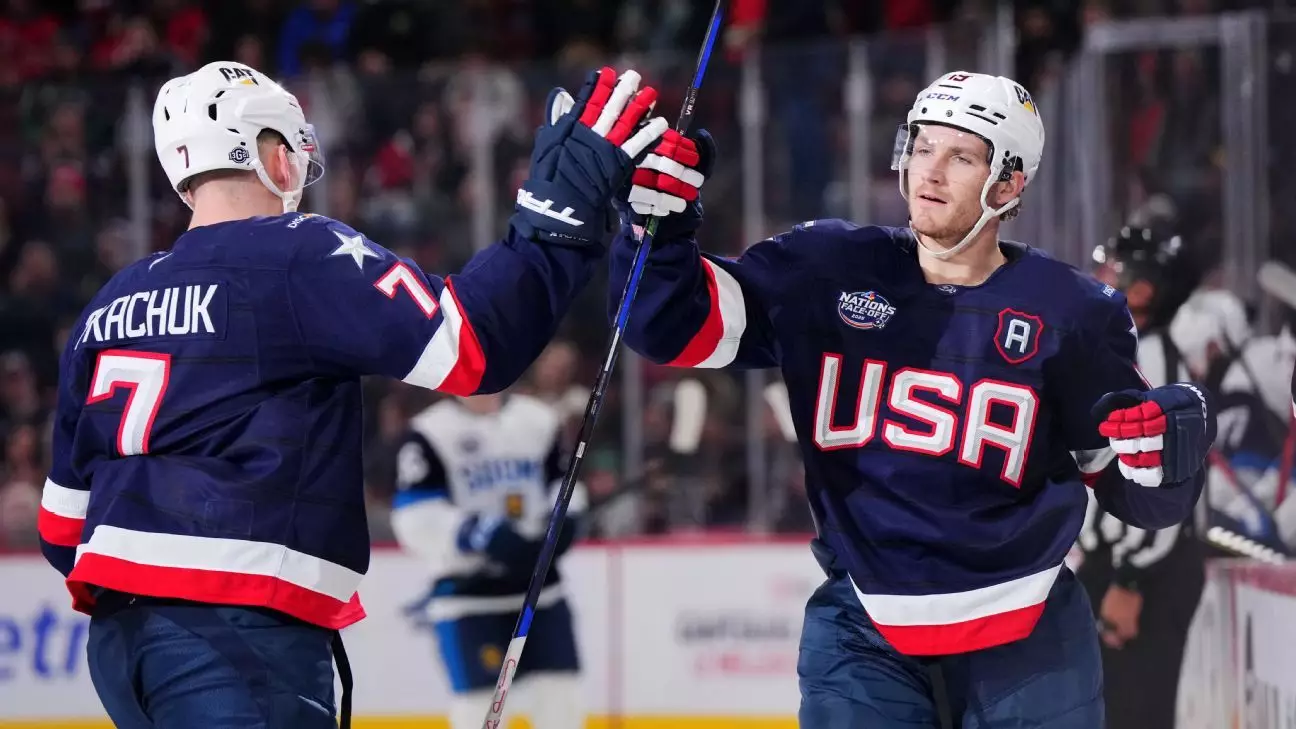In the realm of international sports, few rivalries resonate as profoundly as that between Canada and the United States in hockey. The recent 4 Nations Face-Off championship game not only showcased competitive athletes but also brought to the forefront a myriad of political tensions that lurked beneath the surface. The game, which took place in Boston, became a prism through which to understand the larger implications of national identity, especially in the context of recent political discourse shaped by President Donald Trump. As both teams took to the ice, conversations surrounding Trump’s controversial comments regarding Canada potentially becoming the “51st state” hung heavy in the air, proving that sports can often serve as a battleground for political sentiments.
The fact that the players had an opportunity to communicate directly with the President before a significant match is not just a casual footnote in sports journalism; it adds layers of complexity to the narrative surrounding the event. Team USA members, like Vincent Trocheck and J.T. Miller, described their experience speaking with Trump as surreal and thrilling, showcasing the fascination and sometimes surreal nature of presidential engagement in sports. This interaction highlights the blurring lines between sports figures and political celebrities. While the players expressed excitement and gratitude, it’s essential to ponder who benefits from such engagements. Does this create a sense of national pride, or does it build on existing divisions?
The playful notion of Canada becoming a U.S. state was met with mixed reactions, as Werenski’s remark about Trump omitting the topic during the call showed an awareness of the jokes made at the national expense. While humor often serves as a coping mechanism in geopolitical tensions, it does little to resolve the differences that exist. National identities are compounded in sports, stirring strong emotions among fans who once again let their feelings be heard during the national anthems, leading to a chorus of boos that echoed through the arena.
The games, however, were not void of aggression as demonstrated by the three fights that erupted in the initial seconds of their first encounter. An immediate physical confrontation set the tone for a series rife with animosity. This violence speaks volumes not merely about the sport itself but about the embedded cultural discord faced by both nations. Each game has become an echo of the larger political narrative of competition and discontent, revealing that beneath the smiles and jerseys are complex, emotional histories that inform how these nations perceive one another.
The altercations on ice serve as a mirror to societal issues, hinting that animus in politics often filters into the realm of sports. As fanfare swelled for a highly anticipated rematch, Canada coach Jon Cooper pointedly remarked about the greater meaning of the contest — a call to focus on the game’s essence rather than the political rhetoric surrounding it. This perspective displays an admirable attempt to compartmentalize sports from politics; however, the reality is that such compartmentalization often fails in practice.
Ultimately, while the players played for personal glory, they were also unwitting representatives of their nations, standing in the spotlight against a backdrop of political drama. Each goal scored, every fight engaged in, was more than just a method to win a hockey game—it was a reflection of national pride, cultural identity, and deep-seated rivalry. Through the prism of sports, the longstanding competitive spirit between Canada and the U.S. morphs into a subtext of what it means to hold an identity in an increasingly fractured world.
As we step back to assess the implications of political figures engaging with sporting events, it is crucial to remember that these events can offer a fleeting glimpse into perspectives that often go unheard. The hockey rink becomes a microcosm of larger societal dynamics and a stage upon which the narratives of national pride, rivalry, and the complexities of identity are performed and understood, often beyond the scoreboard. In a world where the distinction between politics and sports continues to erode, it’s clear that each game, each interaction, and each moment has the potential to reveal profound truths about who we are as nations, and how we see ourselves in relationship to one another.


Leave a Reply